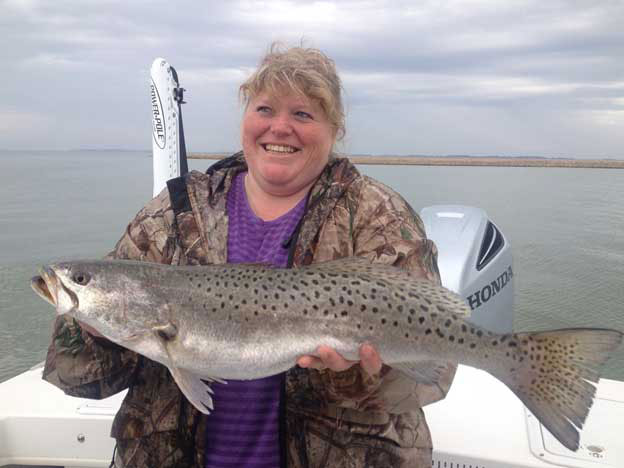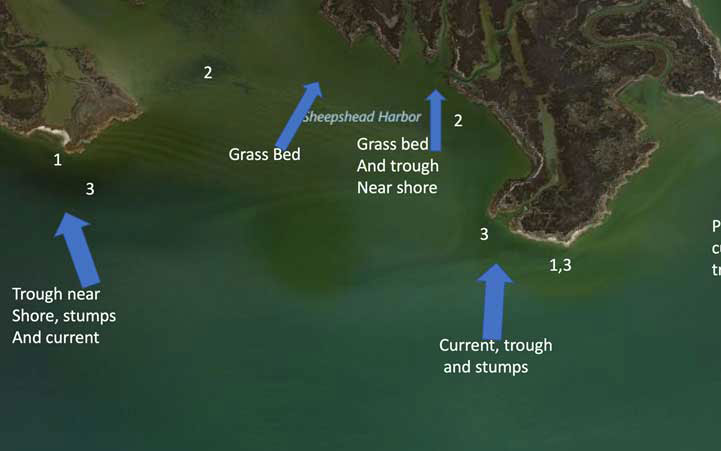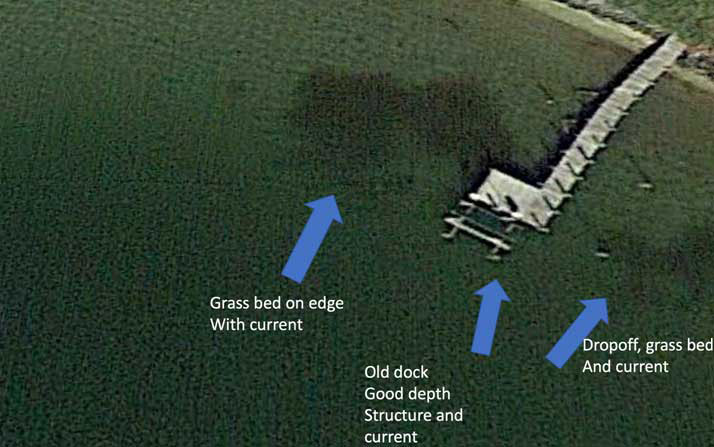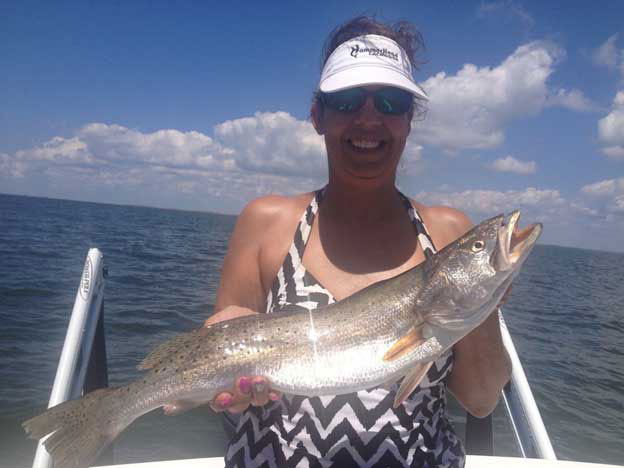There’s nothing like catching skinny water speckled sea trout in Maryland and Virginia waters, some of the most exciting light-tackle action around when it comes to Chesapeake Bay fishing. For many years I’ve been hunting down the beautiful “speck,” sea trout, speckled sea trout, or spotted sea trout, and they’re all the same critter. Certainly great table fare when eaten fresh, they’re a challenge for all who seek out this beautiful game fish. So where are they, how do I find them, what are they eating, and what’s the technique to catch them?

The Speckled Sea Trout, The Whole Trout, and Nothing But The Trout
Speckled sea trout are predator fish who love to eat crabs and assorted baitfish which live in the shallow waters of the Chesapeake Bay. I’ve had great luck catching specks in grass beds, current rips, rockpiles, around islands, and around shallow wrecks. Historically I’ve had great luck with plastics, both paddle tails and straight tails do the trick. The baits I use to catch specks are Bass Kandy Delights (BKD’s), assorted three- to five-inch paddle tails, GULP twitch baits and paddle tails, Rapala X-Rap 10s, and surface plugs like a Storm Chug Bug.
A time I really like to fish for specks is around and on a full moon. During this period, crabs are on the shed and in a very vulnerable state. Both Maryland and Virginia have perfect speckled trout habitat. Shallow bays, coves, wrecks, rockpiles and grass beds are great places to hunt. Shallow to me is two to seven feet or so, but can vary depending on where you are targeting these fish. Another component I look for when speck fishing is current.
Maryland and Virginia waters get super warm in the heat of summer, but specks love hot water – don’t let heat scare you away. Another great thing I’d like to mention about speck fishing in Maryland and Virginia is that while fishing for specks you’ll catch other species like reds or stripers if they’re in the area. It’s all good!
Where to Look for Speckled Trout
If you know an area with grass beds and or the type of structures listed above it’s a good thing, go get ‘em. However, if you’re new to an area some research has to be done. Number one, check out a chart of the region and look for bays where water depths are two to seven foot or so. Tributaries coming out into a bay or off an island are a great thing, along with points sticking out into the water. Places like this will focus the current.
The next thing is to go to Google Earth. Google Earth is the number-one asset to me when fishing new water. If you have a person or tackle shop who will give you direct pointed information about where to catch, that’s great. Otherwise, a good chart and Google Earth will lead the way.

Here’s a good example of what to look for in a Google Earth shot of an area specks could certainly be at. Notice the points, guts, and creeks. Darker green in coves is typically grass, while darker green near shorelines outside coves can be deeper water or grass. Many shorelines and island areas also have old stumps in the water. Zooming in on Google Earth can sometimes reveal these underwater fish magnets. In my world of light tackle fishing, current plus structure equals fish; stumps are beautiful structure and moving current through them make for success.

One note of caution: If you’re new to an area be careful in exploring new shallow water areas. It’s best to do it on the top half of the tide and calm water. Always be alert to any little irregularities on the surface in front of your boat. They could be a rockpile, a wreck, a shallow sand bar, an oyster bed, or an old tractor. Bottom line is, be very careful and don’t run at speed anywhere in shallow water you don’t know well.
I really like grass beds with four feet or more of water but certainly less can produce as well. At the edges of grass beds and in patchy grass I love to throw BKDs or paddle tails on a quarter to three-eighths ounce jig head. If the grass bed comes to the surface it can be tough. In this case a plastic paddle tail, BKD or Gulp on a weedless jig head can work.
Getting Trout to Bite
Working these baits in an erratic fashion is crucial to drawing a strike. I like to make a long cast to my target zone, and click the bail as the lure hits the water allowing for no slack line. Then keep the rod tip low and use a short, sharp, twitching retrieve. Use just enough speed necessary to keep the bait just above the grass bed.
In patchy grass specks love to lay in the edge of beds and attack prey as it passes through the clear spots. An erratically retrieved Rapala X-rap 10, a BKD in pink, chartreuse or white, a three- to four-inch paddle tail, or surface plug can produce in this situation. And water over 80-degrees has inspired specks to hit the surface.

Current rips around points are a beautiful thing, and lofting plastics over the current rip and retrieving back to the boat or shore – again, erratically – produces very well. Work entire current rips from the upstream end to past the downstream end of the rip, and remember that the best current rips tend to come out of coves from shallow water ripping past a point and over a drop-off.
Hunting for and catching specks is a blast – ID a good area, start casting, give your lure that erratic retrieve, and IT will happen!
- By Capt. "Walleye Pete" Dahlberg